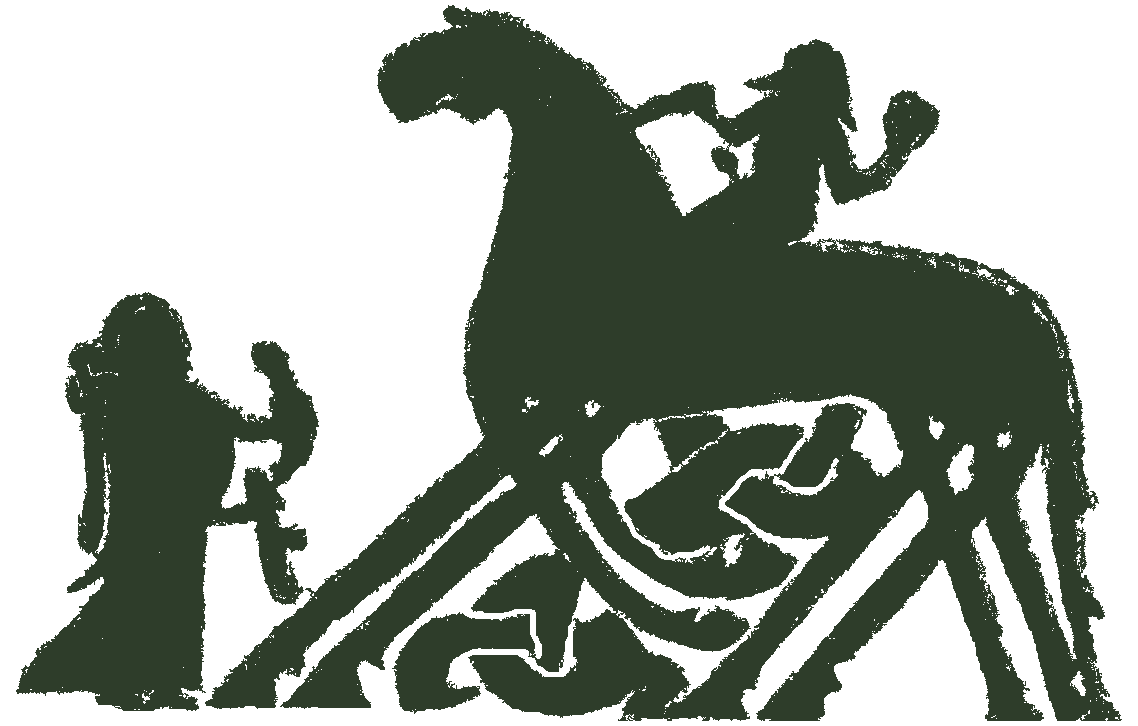Einarr skálaglamm Helgason
description
Little is certain about the life of Einarr skálaglamm ‘Tinkle-scales’ Helgason (Eskál), except that he came from a noble family from western Iceland. They were descendants of Bjǫrn austrœni ‘the Easterner’, i.e. ‘the Norwegian’, son of Ketill flatnefr ‘Flat-nose’. According to Ldn (ÍF 1, 123), Einarr’s mother was Niðbjǫrg, daughter of an Irish king. Einarr’s brother Ósvífr was the father of Guðrún Ósvífsdóttir, the heroine of Laxdœla saga. A few anecdotes link Einarr to Egill Skallagrímsson. Egils saga (Eg, ÍF 2, 268-73) tells of Einarr visiting Egill and the two talking at length about poetry. The meeting led to a long friendship, which is reflected in similarities between the two skalds’ poetry (de Vries 1964-7, I, 176). A valuable shield given to Egill by Einarr inspired Egill to compose a Skjaldardrápa or shield poem honouring the gift, of which only the first stanza has survived (Egill SkjalddrV).
Einarr must have lived c. 940-c. 990. He presumably spent much of his life at the court of Hákon jarl Sigurðarson in Norway, for whom he composed Vellekla (Eskál Vell) and another poem, Hákonardrápa (Eskál Hákdr). Two stanzas (Eskál HardrIII) that possibly stem from one or more Haraldsdrápur in honour of Haraldr blátǫnn ‘Blue-tooth’ Gormsson indicate that he might have spent time at the Danish court, perhaps as a companion of Hákon jarl. Skáldatal (SnE 1848-87, III, 256, 266, 280) mentions Einarr only as one of Hákon jarl’s skalds. Besides these poems, three lausavísur are preserved in Jvs, Fsk, Flat and Eg. The first two are part of a typical skald anecdote about court poetry and its reward, and are preserved in versions that differ sufficiently for them to be printed in both SkP I (Eskál Lv 1a and Lv 2a) and SkP V (Eskál Lv 1bV (Eg 124) and Lv 2bV (Eg 125)). The third (Eskál Lv 3) concerns the death of Þorleifr skúma Þorkelsson (Þskúm), an Icelandic retainer of Hákon jarl, at the battle of Hjǫrungavágr (Liavågen, c. 985).
According to Jvs (1969, 178-9), Einarr’s nickname skálaglamm ‘Tinkle-scales’ refers to a pair of precious and magically resounding scales (OIcel. skálar/skálir) with which Hákon jarl rewarded him for Vell (see Introduction to Eskál Lv 1-3). This explanation (apparently accepted in Finnur Jónsson 1907, 284) may, however, be a later etymological invention, and skálaglamm could instead derive from OIcel. skáli ‘hall, free-standing house’ either as part of a sky-, breast- or shield-kenning (Lie 1975, 643), or more likely as a ‘loud sound (glamm) in the hall’, in reference to his art of recitation. Jvs (1969, 178) also tells that Einarr earlier had the nickname Skjaldmeyjar-Einarr ‘Einarr of the shield-maiden’. Skjaldmeyjar are armed women who took part in battles (cf. Akv 16), but nothing is known about how Einarr got this nickname. According to Ldn and Jvs, Einarr drowned in Breiðafjörður on a voyage home (Ldn, ÍF 1, 123; Jvs 1969, 205); they add a legend according to which his scales (Jvs), or his shield and his coat (Ldn), wash ashore, inspiring the names of the islands Skáleyjar, Skjaldey and Feldarhólmr.
